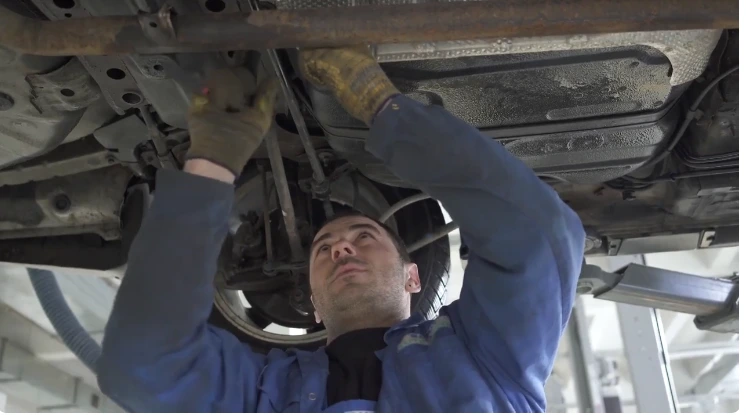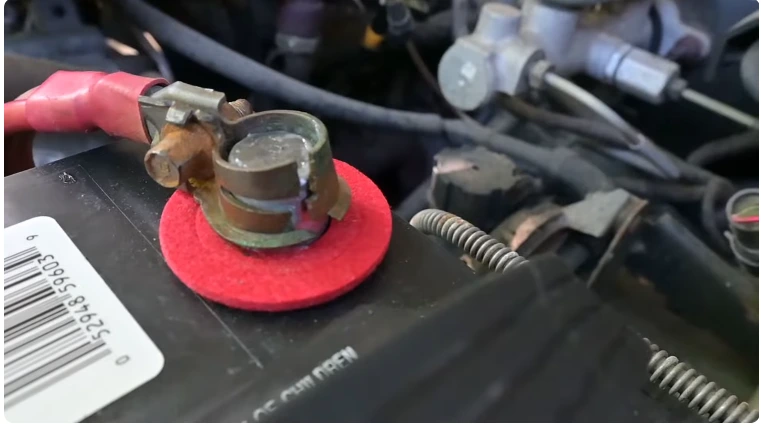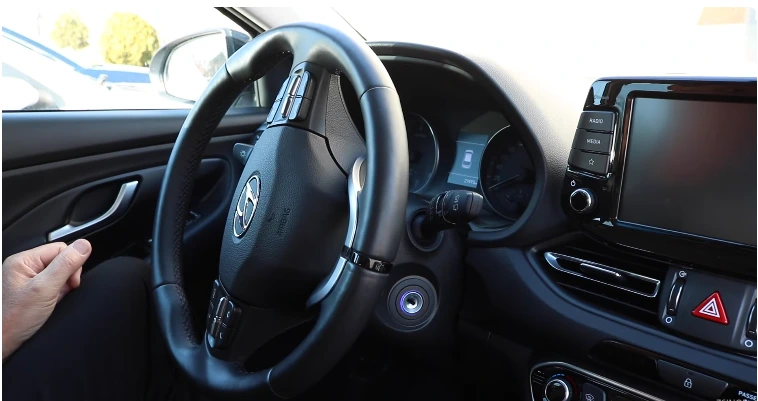Find out the Cost to Lower a Car [Get the Best Deals!]
Lowering a car can cost between $500 to $1500, depending on the type of vehicle and the desired depth of the drop. Custom modifications and additional parts can increase the overall cost.
Besides enhancing the car’s appearance, lowering it can improve handling and performance. It involves adjusting the suspension system, installing new springs, and potentially altering the alignment. It is essential to consult with a professional and experienced mechanic or auto shop to ensure the job is done correctly and safely.
Proper maintenance and regular inspections are crucial after the lowering process to ensure the car remains in optimal condition.
Why Lowering Your Car Can Be Beneficial
Lowering your car can have several benefits, both in terms of aesthetics and performance. Whether you’re a car enthusiast looking to enhance the appearance of your vehicle or a driver seeking improved handling and fuel efficiency, lowering your car can be a worthwhile investment.
Here are some key reasons why lowering your car can be beneficial:
Improve Handling And Performance
- Lowering your car can significantly improve its handling and performance on the road. By lowering the center of gravity, you enhance stability during corners, reducing body roll and improving overall control.
- With improved handling, you can experience better grip and traction, allowing for more precise steering and better maneuverability. This can be especially beneficial in high-speed and performance driving situations.
- Whether you’re navigating sharp turns or cruising on smooth highways, a lowered car can provide a more connected and responsive driving experience, enhancing your enjoyment behind the wheel.
Achieve A More Aggressive And Sleek Appearance
- Lowering your car can transform its visual appeal, giving it a more aggressive and sleek appearance. The lowered stance creates a sportier look, making your vehicle stand out from the crowd.
- By reducing the wheel gap between the tires and fenders, lowering can give your car a more flush and streamlined profile. This can make it look more visually appealing by creating cleaner lines and highlighting the body contours.
- Whether you prefer a subtle drop or a more dramatic stance, lowering your car can add that extra touch of customization, making your vehicle unique and eye-catching.
Enhance Aerodynamics And Fuel Efficiency
- Lowering your car can improve its aerodynamics, reducing drag and enhancing fuel efficiency. By minimizing the amount of air passing under the vehicle, you can limit turbulence and airflow disruptions, resulting in smoother airflow.
- The reduced drag can lead to improved fuel economy, benefiting both your wallet and the environment. With a lowered car, you can potentially see a decrease in wind resistance, allowing your vehicle to glide through the air more efficiently.
- If you’re someone conscious about reducing your carbon footprint and maximizing every drop of fuel, lowering your car can be a practical and eco-friendly choice.
Lowering your car can be both a functional and visual upgrade. By improving handling and performance, achieving a sleek appearance, and enhancing aerodynamics and fuel efficiency, you can elevate your driving experience while turning heads on the road. So, if you’re considering modifying your car, lowering it might just be the perfect choice.
Factors To Consider When Lowering A Car
Lowering a car is a popular modification among car enthusiasts who want to enhance the performance and appearance of their vehicles. However, before diving into this modification, there are several important factors to consider to ensure you make an informed decision.
Here are the key points to keep in mind:
Suspension System Options:
- Coilovers: These are adjustable suspension systems that offer the flexibility to modify the ride height according to your preference. They provide better handling and control compared to stock suspensions.
- Lowering springs: These springs are designed specifically for lowering a car and provide improved aesthetics and a slightly sportier feel to the ride.
- Air suspension: This system allows you to adjust the height of your car on the fly, offering a comfortable ride and the ability to raise or lower the vehicle based on your needs.
Cost Of Aftermarket Parts And Labor:
- Aftermarket suspension components can vary in price depending on the brand, quality, and type of system you choose. Coilovers tend to be the most expensive option, followed by air suspension and lowering springs.
- Labor costs are also a significant factor to consider, as the installation of suspension components can be complex and time-consuming. It’s advisable to seek professional help unless you have the necessary skills and tools.
Ride Quality And Comfort:
- Lowering a car can affect the ride quality and comfort. The stiffer suspension may result in a harsher ride, especially on uneven or bumpy roads.
- It’s important to strike a balance between lowering the car for improved handling and maintaining a comfortable ride. Adjustable suspension systems allow you to fine-tune the settings to find the optimal ride quality.
Legal Limitations And Regulations:
- Lowering a car beyond legal limits can result in fines and penalties. Each state or country has specific regulations regarding the maximum allowed ride height. It’s crucial to familiarize yourself with these regulations to avoid any legal issues.
- Additionally, extreme lowering can impact the functionality of certain vehicle components, such as the suspension, exhaust, and wheel alignment. Understanding and adhering to the legal limitations will help maintain the overall safety and functionality of your vehicle.
Considering these factors is crucial before making the decision to lower your car. Assess your needs and preferences, weigh the costs, and ensure compliance with legal regulations. By doing so, you can enjoy the benefits of a lower stance while maintaining a comfortable and safe driving experience.
Exploring Different Methods Of Lowering A Car
Lowering a car has become a popular modification among auto enthusiasts, as it can dramatically improve the vehicle’s appearance and performance. However, before deciding to lower your car, it’s essential to understand the different methods available and their associated costs.
In this section, we will explore four common methods of lowering a car: lowering springs, coilovers, air suspension, and body kits with ground effects.
Lowering Springs
Lowering springs are an affordable and straightforward method to lower your car’s ride height. Here are the key points to consider:
- Lowering springs replace the stock springs in your car’s suspension system, reducing its ride height.
- They offer improved handling and a sportier stance, enhancing both aesthetics and performance.
- Lowering springs are available in various heights, allowing drivers to choose the desired level of drop.
- They are relatively easy to install, making them a popular choice for diy enthusiasts.
- The cost of lowering springs varies depending on the brand and quality, ranging from $200 to $500.
Coilovers
Coilovers are a versatile suspension upgrade that allows for adjustable ride height and improved handling. Here’s what you should know about coilovers:
- Coilovers combine a shock absorber and a coil spring into one unit, offering flexibility in adjusting both damping and ride height.
- They provide better control and stability, particularly during cornering and aggressive driving.
- Coilovers allow for fine-tuning of your car’s suspension to match your specific driving preferences.
- Installation of coilovers may require professional assistance to ensure proper setup and alignment.
- The cost of coilovers can range from $500 to $2,000, depending on the brand and features.
Air Suspension
Air suspension systems utilize compressed air to control your car’s ride height, offering a smooth and adjustable ride. Consider these points about air suspension:
- Air suspension allows you to raise or lower your car with the push of a button, providing convenience and versatility.
- It offers superior ride comfort, particularly on rough roads or over speed bumps.
- Air suspension systems can be adjusted for different driving modes, such as sport or comfort.
- Installation of air suspension can be more complex and may require professional expertise.
- The cost of air suspension varies significantly depending on the brand and complexity of the system, ranging from $2,000 to $10,000 or more.
Body Kits And Ground Effects
Body kits and ground effects are visual modifications that can give your car a sportier and more aggressive look. Consider the following:
- Body kits typically consist of front and rear bumpers, side skirts, and sometimes a rear spoiler or diffuser.
- Ground effects are aerodynamic enhancements, such as side splitters and front lip spoilers, that improve airflow around the car.
- These modifications have a minimal impact on lowering the actual ride height of the vehicle.
- Body kits and ground effects can range in cost from $500 to several thousand dollars, depending on the brand, material, and complexity.
By exploring the various methods of lowering a car, you can make an informed decision about which option best suits your needs and budget. Whether you opt for lower springs, coilovers, air suspension, or body kits with ground effects, remember to consider both the visual impact and the performance enhancements each method offers.
Take your time, do thorough research, and consult with knowledgeable professionals to ensure a successful and satisfying car-lowering project.
Understanding The Cost Involved In Lowering A Car
Lowering a car can be an exciting way to improve its appearance and overall performance. However, before you embark on this modification project, it’s crucial to understand the cost involved. Here, we break down the key factors that contribute to the overall expenses of lowering a car, including pricing of suspension components, professional installation fees, additional modifications and accessories, wheel alignment, upgraded brakes, and extended warranties.
Pricing Of Suspension Components
The suspension system plays a crucial role in lowering a car, and the cost of suspension components can vary based on several factors. Here are the key points to consider:
- Lowering springs: These are designed to lower the ride height of the car and can cost anywhere from $100 to $500 per set, depending on the brand and quality.
- Coilovers: Coilover systems offer adjustable ride height and damping, making them more versatile than lowering springs. Prices range from $500 to $2,000, depending on the brand and features.
- Air suspension: This advanced system allows you to adjust the ride height with the touch of a button. However, it comes at a higher price, ranging from $2,000 to $10,000, depending on the complexity and brand.
Professional Installation Fees
While some car enthusiasts may have the skills to install suspension components themselves, it’s often recommended to seek professional installation. Here’s what you need to know:
- Labor costs: Installation charges can vary depending on the complexity of the job and the rates of the local automotive shop. On average, professional installation fees for lowering a car range from $300 to $1,000.
- Aligning the suspension: After lowering a car, it’s important to align the suspension to ensure optimal performance and tire wear. This can cost around $100 to $200 for a standard alignment.
Additional Modifications And Accessories
Lowering a car may require additional modifications or accessories to ensure proper fitment and performance. Consider the following:
- Sway bars: Upgrading sway bars can enhance the stability and handling of a lowered car. Prices typically range from $100 to $500, depending on the brand and material.
- Camber plates: These allow for adjustment of the wheel’s camber angle, which is crucial for achieving optimal tire contact and handling. Prices vary from $100 to $400 per set.
- Strut tower bars: These reinforce the chassis and improve handling characteristics. Prices range from $50 to $300, depending on the material and brand.
Wheel Alignment
When lowering a car, it’s essential to perform a wheel alignment to maintain proper tire wear and handling. Keep in mind:
- Cost of alignment: Wheel alignment typically costs between $100 and $200, depending on the complexity of the adjustments required.
- Regular maintenance: Lowered cars may require more frequent alignment checks to ensure the suspension remains properly adjusted over time.
Upgraded Brakes
Lowering a car can significantly improve its handling and cornering abilities, which may necessitate upgraded brakes. Consider the following:
- Brake system upgrade: Prices for brake upgrades vary depending on the specific components and brand. On average, you can expect to spend between $500 and $3,000 for a complete brake upgrade.
- Brake pad and rotor replacement: Lowered cars often require specialized brake pads and rotors, which can cost between $200 and $500, depending on the brand and material.
Extended Warranties
Lastly, when considering the cost of lowering a car, it’s essential to factor in extended warranties, especially if the modification affects the original suspension components. Here’s what you should know:
- Warranty coverage: Extended warranties for suspension modifications can provide peace of mind but come at an additional cost. Prices vary depending on the extent of coverage and the provider.
- Protecting your investment: While extended warranties may add to the overall cost, they can help cover potential repairs or replacements in the future.
Lowering a car involves various costs, from suspension components and professional installation to additional modifications and accessories. It’s essential to consider these factors and budget accordingly before embarking on this exciting modification project. By understanding the cost involved, you can make informed decisions and achieve the desired look and performance for your lowered car.
How To Get The Best Deals When Lowering Your Car
Lowering your car can enhance its performance and give it a sleek, customized look. However, the cost of lowering a car can vary greatly depending on various factors. To help you get the best deals and save some money, here are some tips to consider:
Research And Compare Prices
Doing thorough research and comparing prices is essential to find the best deals when it comes to lowering your car. Here are some key points to keep in mind:
- Visit multiple auto shops or online retailers to get a clear idea of the average cost of lowering kits, coilovers, or other suspension components.
- Look for reputable brands that offer both quality and affordability. Don’t compromise on the quality of the parts just to save a few bucks.
- Consider the installation costs associated with different options. Some shops may offer a package deal that includes both the parts and labor, while others may charge separately for installation.
- Read customer reviews and ratings to ensure you are getting reliable and durable parts. Look for reviews from other car enthusiasts who have successfully lowered their vehicles.
Seek Recommendations And Read Reviews
One of the best ways to find good deals and reliable services is through recommendations from friends, fellow car enthusiasts, or online communities. Here’s what you need to know:
- Ask for recommendations from people who have already lowered their cars. They can direct you to trustworthy shops or online sellers with reasonable prices.
- Participate in online forums or social media groups dedicated to car modifications, where you can seek advice and read reviews from experienced enthusiasts.
- Pay attention to feedback about the quality of the parts, installation services, and customer support. Positive reviews can help you make an informed decision.
Look For Discounts And Promotions
Saving money on car modifications is always a bonus. Keep an eye out for discounts and promotions to get the best deals. Here’s how:
- Follow popular car modification websites, social media pages, and online retailers to stay updated on any ongoing discounts or promotional offers.
- Sign up for newsletters or join loyalty programs offered by auto shops or online sellers. This can grant you exclusive access to special deals and limited-time promotions.
- Consider timing your purchase during holiday sales or clearance events when prices may drop significantly.
Negotiate With Local Auto Shops
If you prefer getting your car lowered by a professional, don’t hesitate to negotiate the price. Here’s how to go about it:
- Contact multiple local auto shops and inquire about their pricing for lowering services. Make sure to mention that you are exploring multiple options.
- Share any lower quotes you’ve received from other shops and ask if they can match or beat those prices.
- Be respectful and open to compromise. Finding a middle ground that works for both parties can help you secure a better deal.
Consider Second-Hand Parts And Diy Installation
Another way to lower your car’s cost is by considering second-hand parts or opting for diy installation. Keep in mind the following:
- Explore local car part salvage yards or online marketplaces where you can find used lowering kits or suspension components at lower prices.
- Make sure to thoroughly inspect the parts for any damage or signs of wear before purchasing.
- If you have the necessary skills and tools, you can save a significant amount of money by installing the parts yourself. Just make sure to follow proper safety precautions and guidelines.
By implementing these tips, you can find the best deals and save money when lowering your car. Remember to prioritize quality and safety over cost, ensuring that your car’s performance and appearance are enhanced without compromising on reliability. Happy lowering!
Avoiding Common Pitfalls When Lowering A Car
Lowering a car is a popular modification many car enthusiasts undertake to enhance the appearance and performance of their vehicles. However, if you’re planning on lowering your car, there are several common pitfalls to avoid. By conducting thorough research, considering ride quality, legal restrictions, and investing in professional installation, you can ensure a successful and hassle-free car lowering experience.
Let’s dive into the key points to keep in mind when embarking on this modification journey.
Insufficient Research Leading To Poor Choices
When it comes to lowering a car, proper research is crucial. Here are the key points you need to consider:
- Understand the different types of lowering kits available, such as coilovers, lowering springs, or air suspension systems.
- Research the pros and cons of each type to determine which one best suits your needs.
- Learn about the specific requirements and potential challenges for your car make and model.
- Research reputable brands and read reviews to ensure you choose high-quality components.
- Consider consulting with car enthusiasts or professionals who have experience with car lowering.
Sacrificing Ride Quality For Aesthetics
While lowering a car can certainly enhance its appearance, it’s important to strike a balance between aesthetics and ride quality. Consider the following points:
- Lowering a car can affect its suspension and potentially compromise the overall ride comfort.
- Be aware that lowering a car too much can lead to issues such as bottoming out, increased tire wear, and reduced ground clearance.
- Take into account your driving habits and the road conditions you frequently encounter. Our everyday roads may not always be as smooth as we desire.
- Choose a lowering kit that offers adjustable settings, allowing you to fine-tune the ride height and stiffness to better suit your preferences.
Neglecting To Consider Legal Restrictions
Lowering a car can sometimes have legal implications. Before proceeding with this modification, keep the following points in mind:
- Research your local laws and regulations regarding car modifications, specifically concerning ride height restrictions.
- Consider any potential modifications required to comply with legal restrictions.
- Determine if your insurance company has any policies or limitations related to lowered vehicles. Ensure that your modifications will not void your coverage.
Cutting Corners On Professional Installation
To ensure a safe and effective car lowering experience, professional installation is highly recommended. Take note of the following:
- Improper installation can lead to more serious issues down the road, including suspension damage and compromised handling.
- Seek out reputable shops or mechanics who have experience with car lowering and can provide professional installation services.
- Professional installation ensures that all components are properly aligned, torqued, and adjusted to optimize performance and minimize any potential risks.
Remember, properly lowering your car involves careful consideration, research, and investing in quality components and professional installation. By avoiding common pitfalls, you can enjoy an improved aesthetic appeal and performance while maintaining the overall integrity and safety of your vehicle.
Conclusion
The cost of lowering a car can vary depending on several factors such as the type and brand of the vehicle, the desired level of lowering, and the method chosen for modification. Lowering a car can enhance its appearance, improve handling, and give it a sportier feel on the road.
However, it is important to consider the potential downsides such as reduced ground clearance and increased risk of damage to the suspension system or exhaust components. When deciding to lower a car, it is crucial to weigh the benefits against the potential drawbacks and to consult with a professional who can provide expert guidance.
By understanding the cost involved and making an informed decision, car enthusiasts can achieve the desired look and performance while ensuring the safety and longevity of their vehicles.





![How to Reset Stabilitrak [Step by Step]](https://automhelp.com/wp-content/uploads/2024/02/How-to-Reset-Stabilitrak.webp)
![Why Is the Drive (D) Light Blinking on My Honda?[Solved]](https://automhelp.com/wp-content/uploads/2024/02/Why-Is-the-Drive-D-Light-Blinking-on-My-Honda-Solved.webp)
